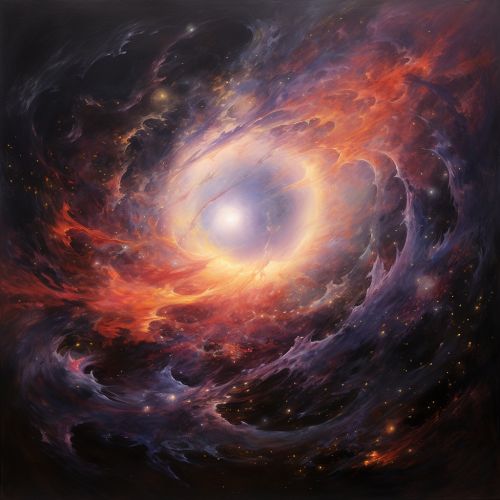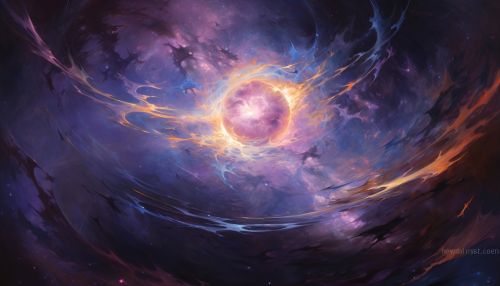Accretion (astrophysics)
Introduction
Accretion in astrophysics refers to the process by which matter accumulates onto a celestial body, typically through the force of gravity. This process is fundamental to the formation and evolution of astronomical objects such as stars, planets, and galaxies. The accretion process can take place over a wide range of scales, from the accumulation of dust and gas to form planets, to the growth of galaxies through the merging of smaller galaxies.


Accretion in Star Formation
Stars are formed in dense regions of interstellar medium where gravity causes gas and dust to collapse and form a protostar. As the protostar continues to accumulate mass from the surrounding medium, it eventually reaches a point where the pressure and temperature at its core are sufficient to ignite nuclear fusion, marking the birth of a new star. This process of star formation via accretion is known as stellar evolution.
Accretion Disks
An accretion disk is a structure often observed in high-energy astrophysical systems where matter spirals into a central body. These disks are typically formed when a large amount of angular momentum prevents the direct inward fall of matter onto the central object. Accretion disks are commonly found in systems such as binary stars, where matter from one star is transferred onto its companion, and around black holes, where the intense gravitational pull draws in surrounding matter.
Accretion in Galaxy Formation
Accretion also plays a crucial role in the formation and evolution of galaxies. This process, known as galaxy formation and evolution, involves the accumulation of gas and smaller galaxies by larger galaxies. Accretion can lead to significant changes in the morphology and dynamics of the accreting galaxy, and can trigger episodes of star formation and active galactic nucleus activity.
Accretion in Planet Formation
Planets are formed through a process known as planetary system formation, which involves the accretion of dust and gas in a protoplanetary disk around a young star. The solid particles in the disk collide and stick together, forming planetesimals. These planetesimals then continue to collide and merge, forming protoplanets. Over time, these protoplanets can accumulate enough mass to become fully fledged planets.
